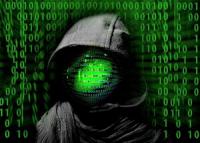-
Lessons from Columbine: Testing “Run, Hide, Fight” Approach to Active Shooter Situations
“Run, hide, fight!” It has become a mantra for how to act during an active shooter situation. The idea is to escape the situation or protect oneself, and counter the gunman as a last resort. But how well does this approach work in an active shooter situation?
-
-
The Great Replacement, White Genocide Theories: Prevalence, Scale, Proliferation
A new in-depth study of the Great Replacement and White Genocide, two racist conspiracy theories with hundreds of thousand followers – some of them violent — in Europe and the United States, has found that the proliferation of theses conspiracy theories was helped by their mainstreaming by elected officials, and the active promotion by alternative far-right media outlets.
-
-
Transnational Organized Crime and National Security: Hezbollah, Hackers and Corruption
American law enforcement efforts have become increasingly multifaceted as the government attempts to combat the continuing ingenuity and sophistication of transnational organized criminal groups. Eric Halliday writes in Lawfare that the U.S. government has announced several significant actions taken against transnational organized crime groups. The Treasury Department’s Office of Foreign Assets Control (OFAC) promulgated a slew of sanctions against the financial networks of both Hezbollah and Cártel de Jalisco Nueva Generación (CJNG). The Justice Department announced takedowns of drug trafficking rings spanning the U.S. and Mexico as well as a large-scale organized cybercrime ring composed of members from several Eastern European countries.
-
-
Private prisons have a political role in corrections issues in the U.S.
Private prisons hold more than 120,000 inmates, about 8 percent of all prisoners, for 29 states and the federal government. The two largest private prison companies also operate more than 13,000 beds for immigrant detention. Private prisons play a political role in immigration and incarceration issues in the United States and the industry may face obstacles as well as opportunities in the current political landscape, new research finds.
-
-
Several German pro-immigration politicians receive death threats
As the investigation of the killing of pro-immigration politician Walter Lübcke intensifies, Cologne’s mayor and several other German politicians who support generous refugee admission policies have had their lives threatened. Two of these politicians, in 2017, have already been attacked by knife-wielding far-right extremists.
-
-
How deeply has Germany’s murderous far right penetrated the security forces?
On June 2, Walter Lübcke was found dead in his garden with a bullet wound in the head. In his home town of Kassel, in the heart of Germany, the affable 65-year-old politician was a well-known member of Chancellor Angela Merkel’s center right party who had welcomed immigrants when she opened the country’s doors to refugees in 2015—and who had weathered a storm of hatred on social media as a result. Josephine Huetlin writes in the Daily Beast that at first, police insisted there was no political connection to the murder, and several investigators dismissed the possibility the killer came from the far right. But this week they arrested a suspect with neo-Nazi associations and a history of racist crimes. Now, the federal prosecutor’s office has taken over the case, which means it will be treated as an act of extremism and, in effect, of terrorism.
-
-
Germany investigates “right-wing extremist” murder of a pro-immigration politician
A German pro-immigration politician has been murdered in what appears to be an execution-style assassination. German Interior Minister Horst Seehofer has described the attack as “right-wing extremist” in nature, saying it was “directed against us all.”
-
-
Terrorist sympathizer who placed bombs in South Carolina roadways sentenced
A man and his daughter were driving down a rural highway in Anderson County, South Carolina, on 30 January 2018, when they noticed something odd—a glowing wicker basket in the middle of the road. On 4 and 15 February, the bomber placed other bomb-like devices in the area. Two more devices were found in the subsequent days. The FBI’s investigative and scientific teams cracked the case, and in February 2019 the culprit was sentenced to thirty years in prison.
-
-
Virginia Beach shooting reflects trend toward more powerful handguns
Like most mass shooters, the Virginia Beach gunman used a handgun. And like a growing number of American gun-buyers, he had a preference for some of the most powerful weapons available on the market. The use of semiautomatic handguns since 1990 has outpaced an already growing gun market.
-
-
Responding to the rise in domestic terrorism: Don’t forget prevention
The April attack on a synagogue in Poway, California, was the latest demonstration of the rise in extremist violence in the United States committed not by “jihadists” inspired by ISIS or other international terrorists, but by white supremacists, neo-Nazis or other right-wing groups. Eric Rosand writes in Lawfare that with the Tree of Life Synagogue attacks still fresh in many Americans’ minds, post-Poway discussions further highlighted how the resources and tools available to prevent right-wing extremist violence or domestic terrorism in the United States are dwarfed by those available to deal with the jihadist-inspired violence that data shows to be a much lesser threat. Rectifying this imbalance requires urgent attention.
-
-
Ghost guns are everywhere in California

Feds say nearly a third of firearms recovered in California are homemade, unserialized, and untraceable. Experts say the accessibility of ghost guns is aided by a cottage industry of retailers selling nearly completed firearms that require no screening to purchase.
-
-
UNC shooting has these things in common with other campus shootings
The 30 April shooting at the University of North Carolina at Charlotte follows a familiar pattern of mass shootings at college campuses in the United States. If authorities better understood these patterns, they may be able to prevent future shootings.
-
-
Transnational organized crime and national security
Traditional organized crime, ranging from the Italian-American mafia to street gangs, has long been a target of American law enforcement efforts. Eric Halliday writes in Lawfare that unlike purely domestic organized crime, transnational organized crime, defined by the Justice Department as groups that pursue criminal activities across geographic boundaries, has profound national security implications. The FBI warns that transnational organized crime poses a diverse array of national security threats related to border security, government corruption both in the United States and abroad, energy and “strategic material” markets around the world, and “logistical and other support to terrorists and foreign intelligence services.”
-
-
The darker side of the dark web: Weapons trade

Debates over gun regulations make headlines across the world, but there’s an underground operation for weapons that has drawn very little attention – until now. Researchers crept into the dark web to investigate how firearms are anonymously bought and sold around the world.
-
-
“Hardened” schools are not safe from gun violence

Hardening of schools seems to be a questionable endeavor, given the dearth of evidence regarding effectiveness, says an expert. A comprehensive review of the literature from 2000 to 2018 regarding school firearm violence prevention, found no programs or practices with evidence that they reduced such gun violence.
-
More headlines
The long view
Why Was Pacific Northwest Home to So Many Serial Killers?
Ted Bundy, Gary Ridgway, George Russell, Israel Keyes, and Robert Lee Yates were serial killers who grew up in the Pacific Northwest in the shadow of smelters which spewed plumes of lead, arsenic, and cadmium into the air. As a young man, Charles Manson spent ten years at a nearby prison, where lead has seeped into the soil. The idea of a correlation between early exposure to lead and higher crime rates is not new. Fraser doesn’t explicitly support the lead-crime hypothesis, but in a nimble, haunting narrative, she argues that the connections between an unfettered pollution and violent crime warrant scrutiny.
